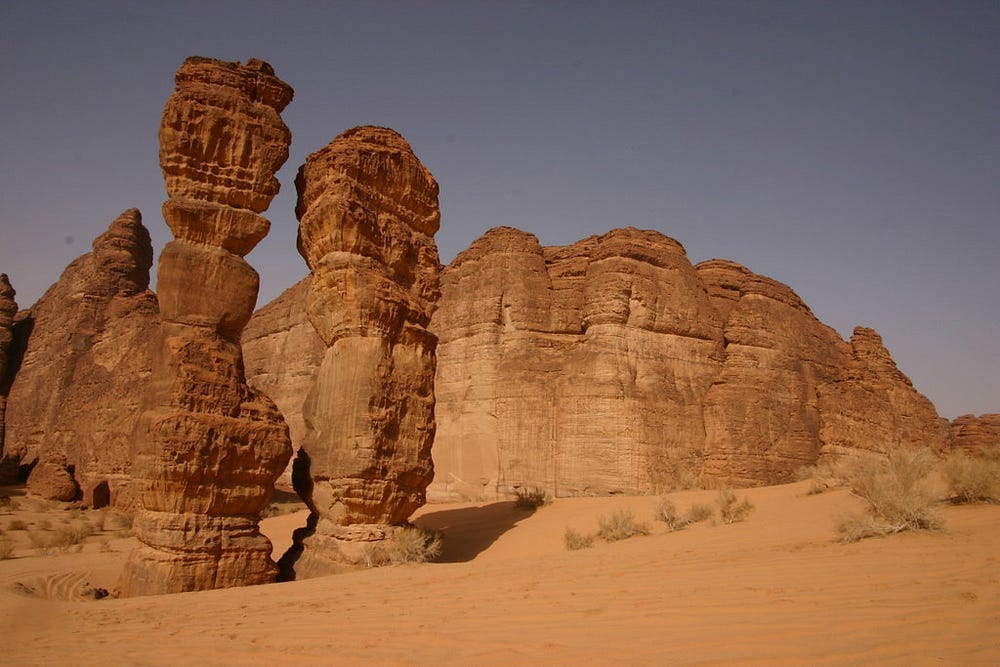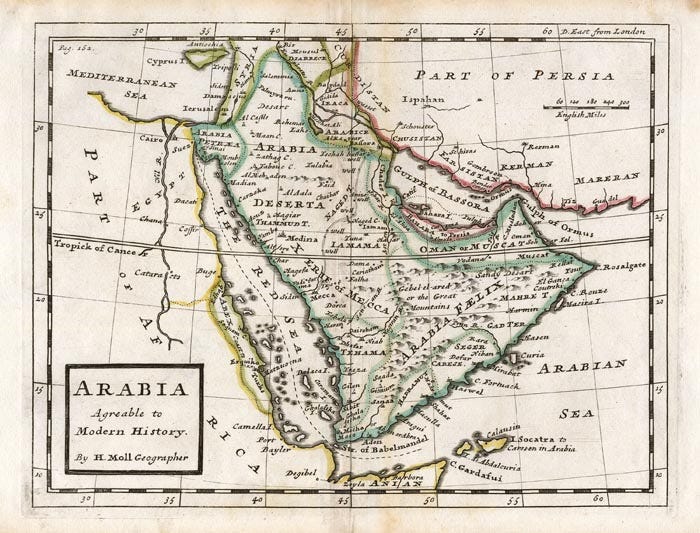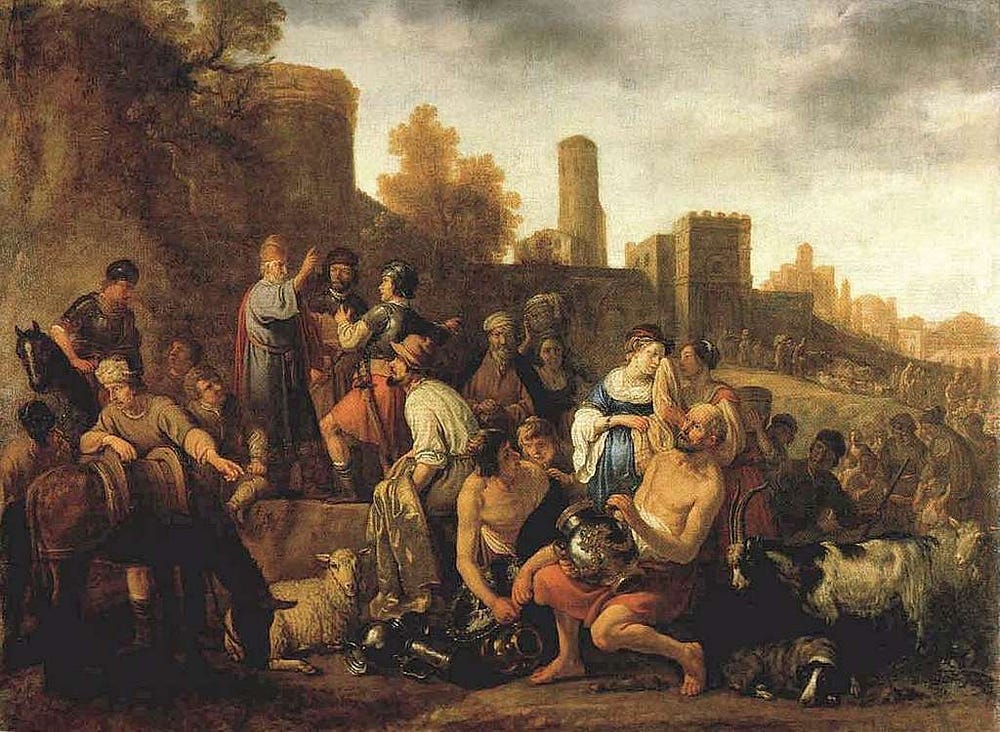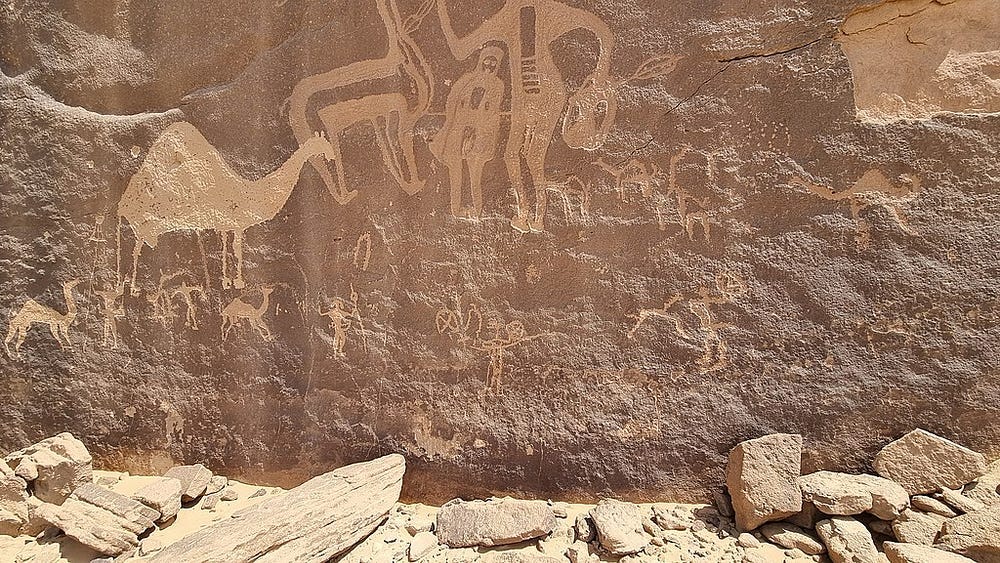Midian and the Midianites
Northwestern Saudi Arabia may have played a crucial role in shaping the stories of the Hebrew Bible.

A reader of last month’s post was curious about the Land of Midian, which I mentioned twice: once in a story from the Book of Exodus about where Moses fled after killing an Egyptian slave-driver, and a second time relating to the remains of a holy tabernacle unearthed in today’s Israel. Scholars are convinced that Yahveh (a.k.a. Jehovah) was worshiped in that tabernacle by a people who were called Midianites by the authors of the Hebrew Bible.
Midian and Midianites come up a couple dozen times in the Bible, from Genesis and Exodus to the much later writings of prophets like Isaiah and Habakkuk. But for a long time, no one could state with confidence (or, at least, confidence justified by the evidence) exactly where Midian was located or who “the Midianites” were — or even if the word itself referred more to a place or a people.
This has recently changed.
A Franco-Saudi archaeological investigation published in 2021 excavated a wealth of finds at an oasis in northwestern Saudi Arabia. The researchers concluded that this site seemed to be the center of “a large Midianite tribal confederation” who had “a long and rich history that remained forgotten until today.”

The Midianites are just one of many tribes and peoples listed in the Bible who may be familiar to us — like the Canaanites, the Philistines and the Amalekites, to name a few. But there were hundreds — possibly thousands — more groupings that were left unmentioned in the final version of the text. Among them are some, like the Shasu (that name probably deriving from an Egyptian term for nomads) who may have been the original proto-Israelites. Even the Midianites themselves are called Kenites by some scholars due to their supposed progenitor Cain, the firstborn son of Adam and Eve. A famous conjecture about the origin of the god of the Israelites is interchangeably called the Midianite or the Kenite Hypothesis, saying that the god we know as Jehovah originated in what is now northwest Saudi Arabia, on the eastern bank of the Red Sea.
Midianites were Semites, like the Israelites, which means that the languages the groups spoke might have been intelligible to one another. They both seem to have revered a god whose name was spelled with the four letters YHVH. (The Shasu believed in YHV.) There is rabbinical commentary on the Book of Numbers that says the Midianites ate pork, which used to be considered a disqualifying cultural trait for membership in the Israelite tribal confederacy among archaeologists — but now it is believed that the pork taboo might not have been applicable to all early Israelites.
As the centuries passed and the two tribal confederations settled in slightly different areas of the Middle East, their histories might have intertwined at some moments and distanced themselves at others. There is evidence for this in the mythology. At one point in the Bible we have Moses, the leader of the Israelites, marrying a Midianite woman, fathering children with her and heeding the advice of his father-in-law Jethro, “a priest of Midian” (Exodus 18:1); at another we have God telling Moses to “attack the Midianites and strike them dead” (Numbers 25:17).

In my novel retelling the Exodus story from a non-biblical point of view, there are Midianite characters who consider themselves “cousins” of the Children of Israel. They are important to the plot because they warn the Israelites about the coming wave of locusts, which even today tend to sweep northwestward through Saudi Arabia to Egypt if conditions are right in the Indian Ocean. As a result of this tip-off in my book, the Israelites harvest their trees and gardens early while the Egyptians’ fields are laid waste. I made my characters skilled metalworkers because of the Midianite connection to copper mines near the Red Sea.
Not only were some Midianites excellent smiths, they also beautifully painted their clay pots and exported them all over the Levant. These distinctive ceramic wares used to be called “Midianite pottery,” and are now known as “Qurayyah Painted Ware” after their place of origin was more precisely pinpointed.
Midianites were also cavemen. … and women, of course, long before anyone wrote down the name of Midian. In April 2024, the New York Times featured an article about lava tubes in northwest Saudi Arabia harboring rock art that was at least 7,000 years old, complicating theories about how and when human civilizations developed in the area. Since I, like some biblical archaeologists, believe that the Mountain of God described in the Hebrew Bible was actually an erupting volcano in Midian, I’ve written scenes in which my protagonists hide out with their flocks in just such a cave while the rest of the Israelites are worshiping the Golden Calf.
Kind of gives a whole new meaning to the phrase, “underground art scene.”




